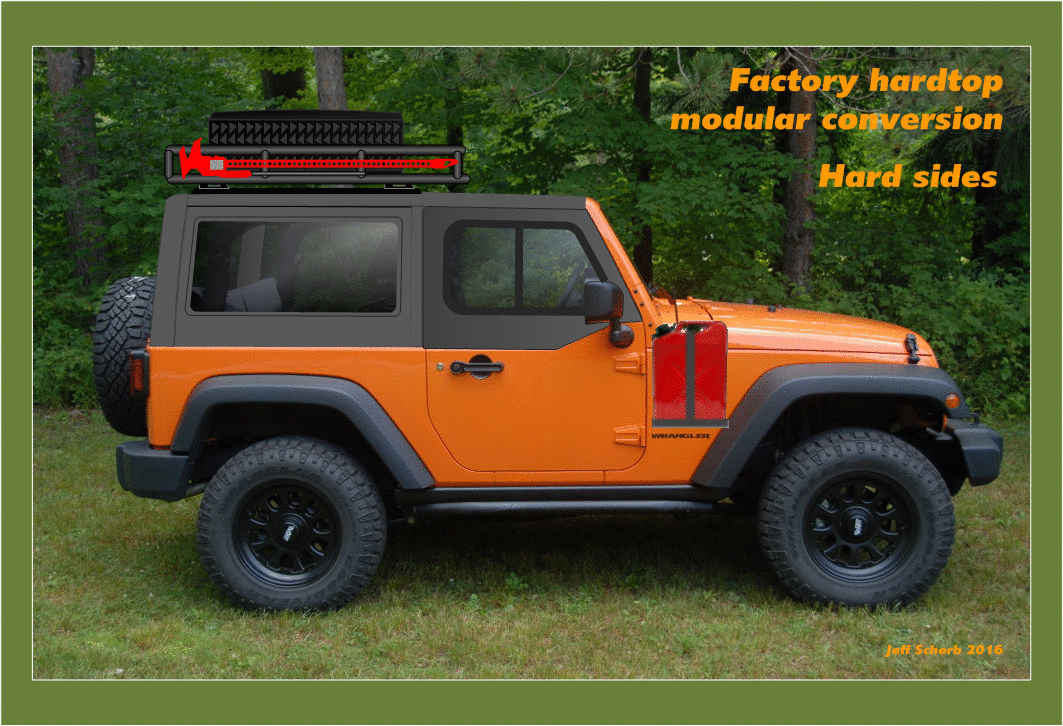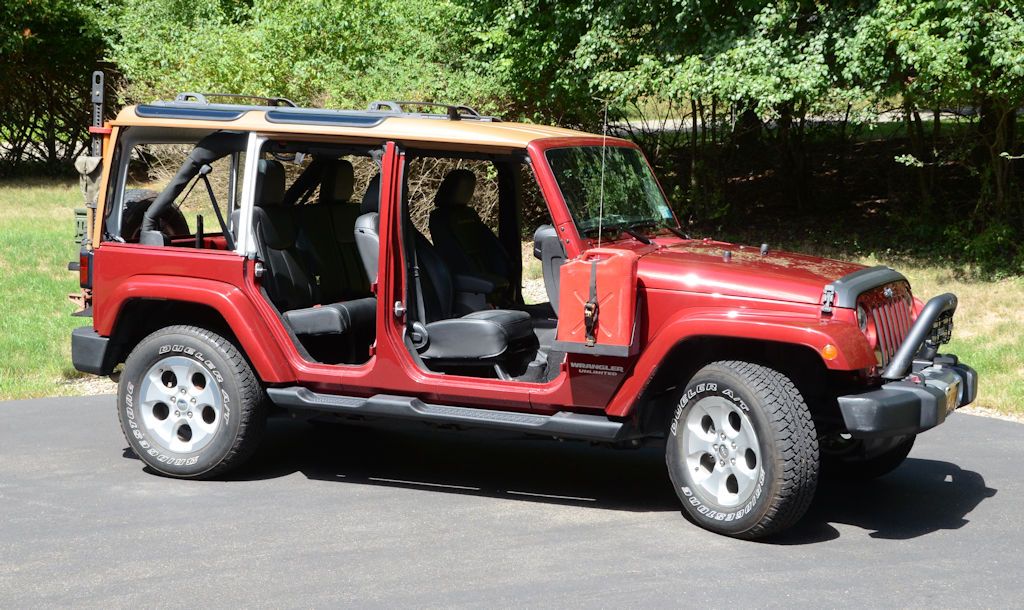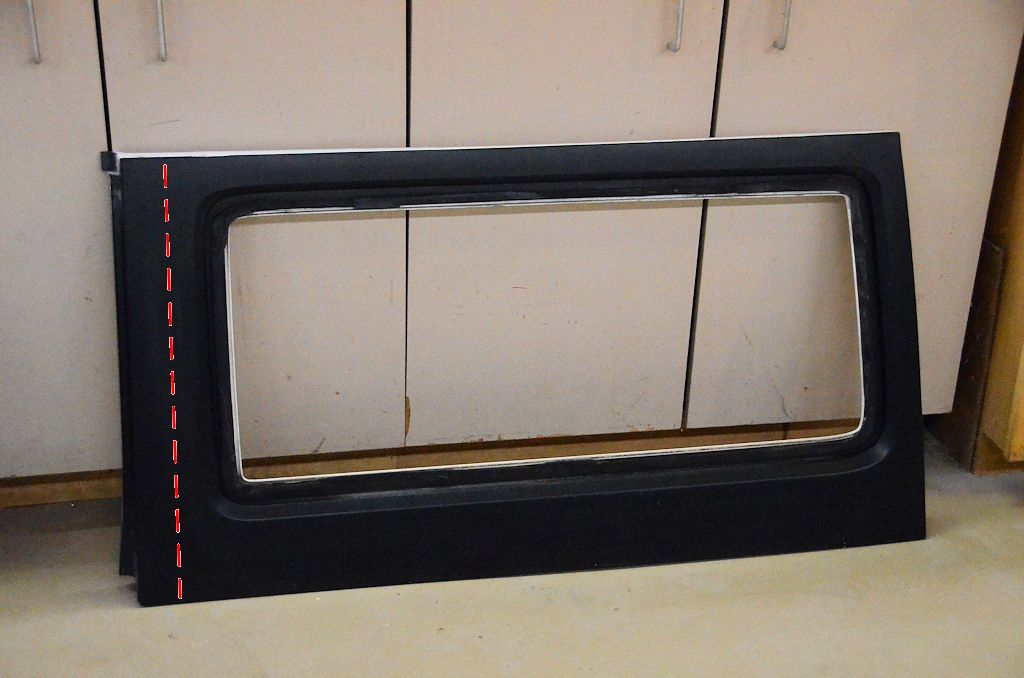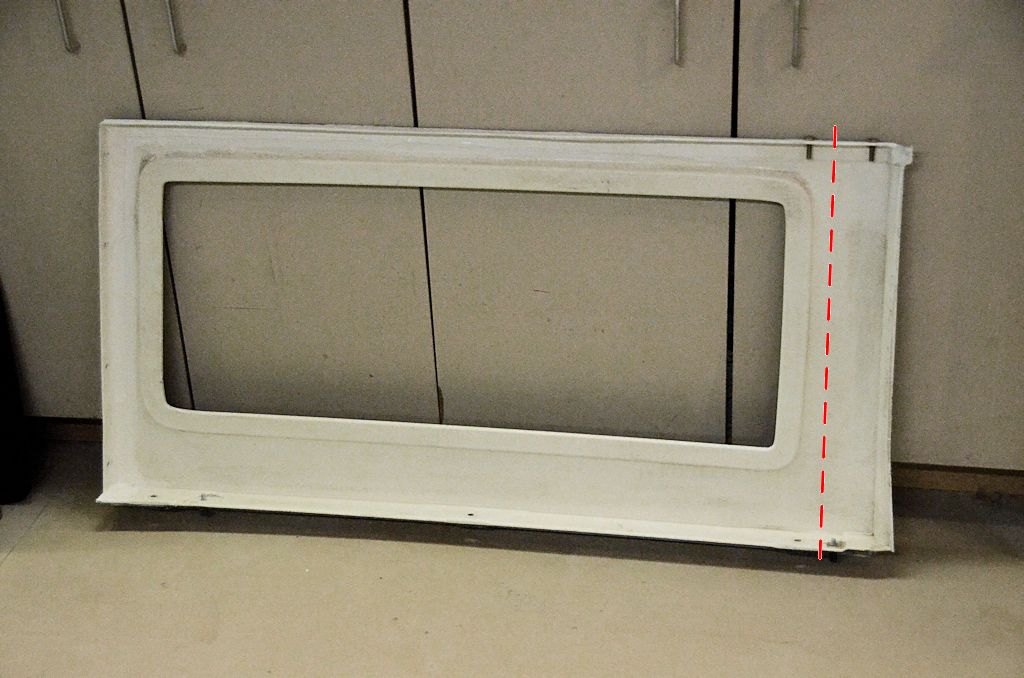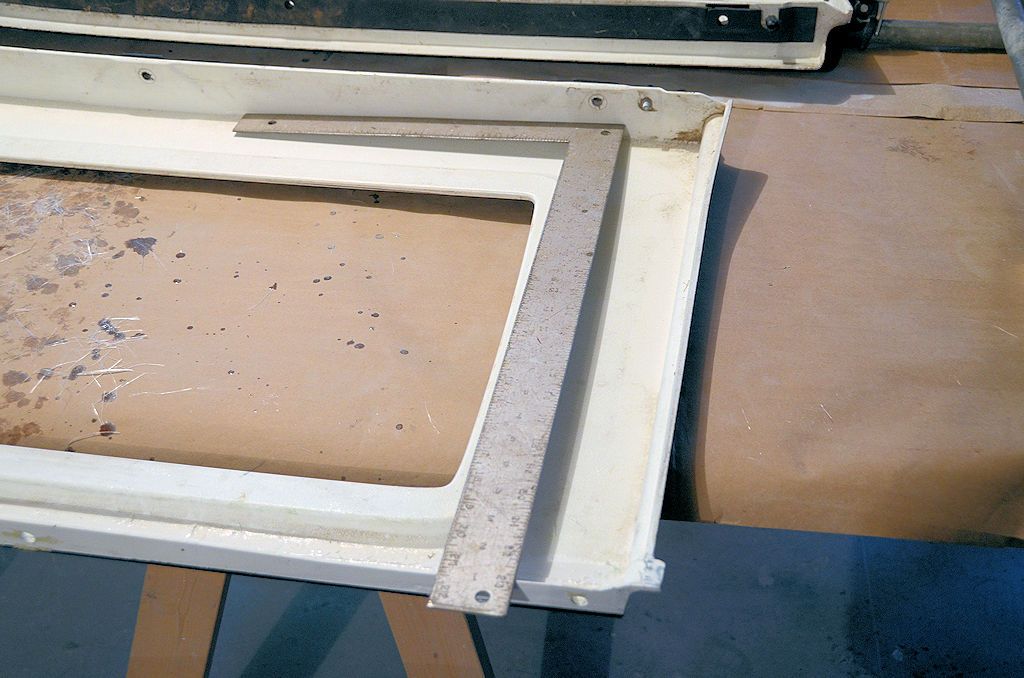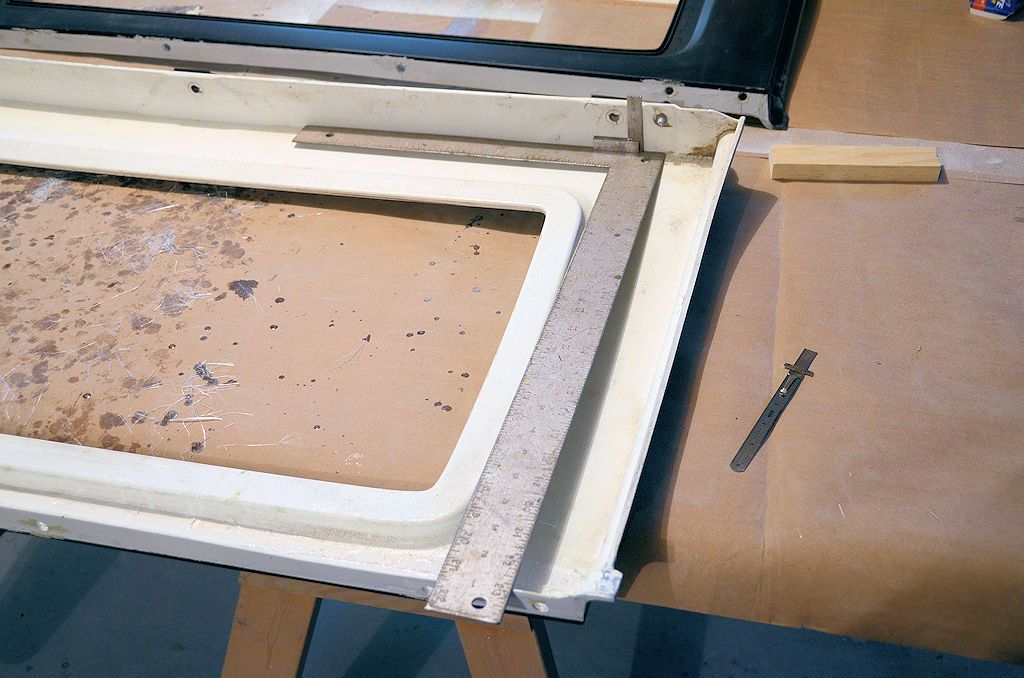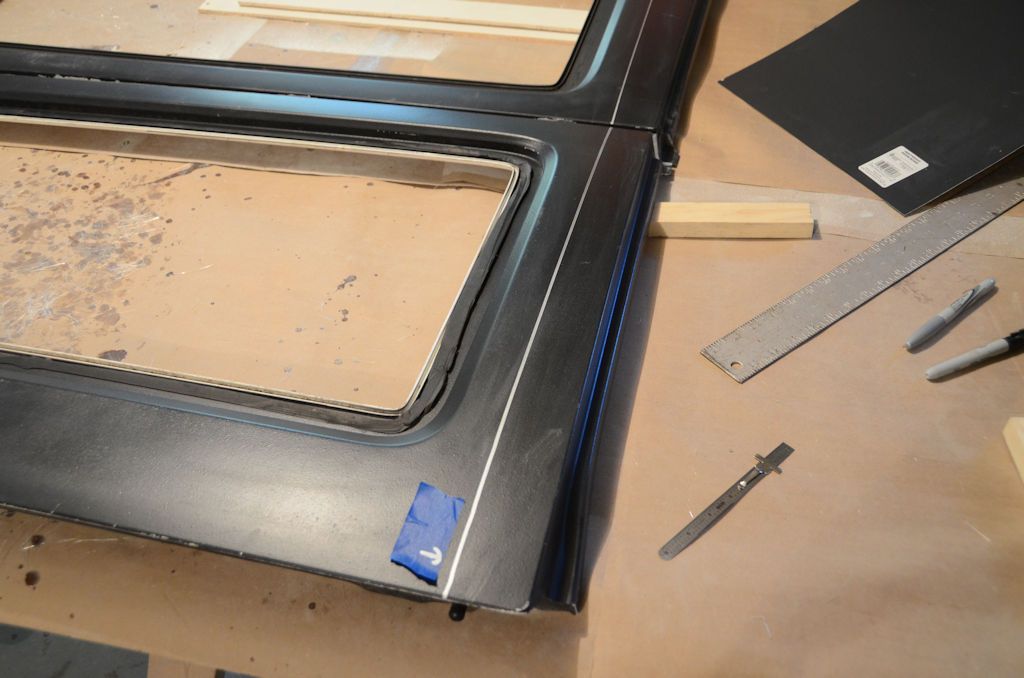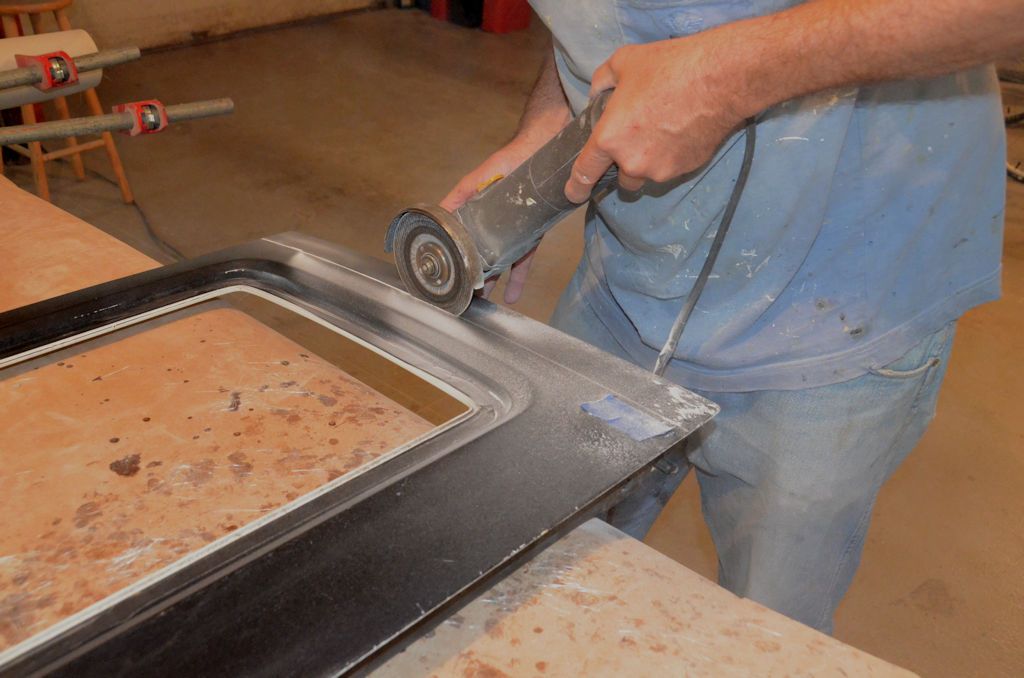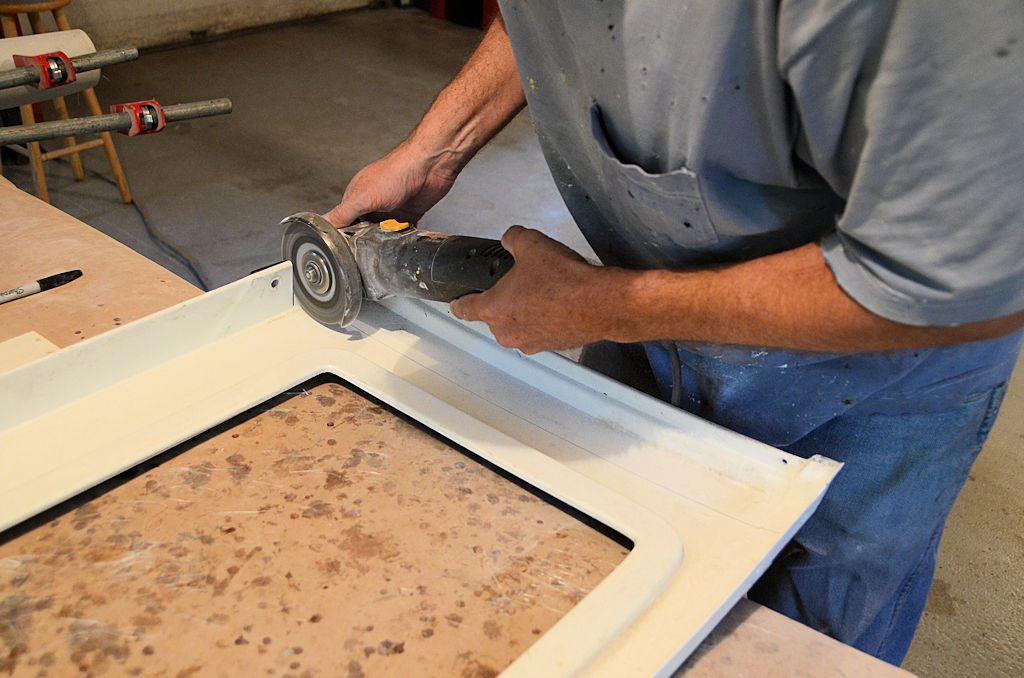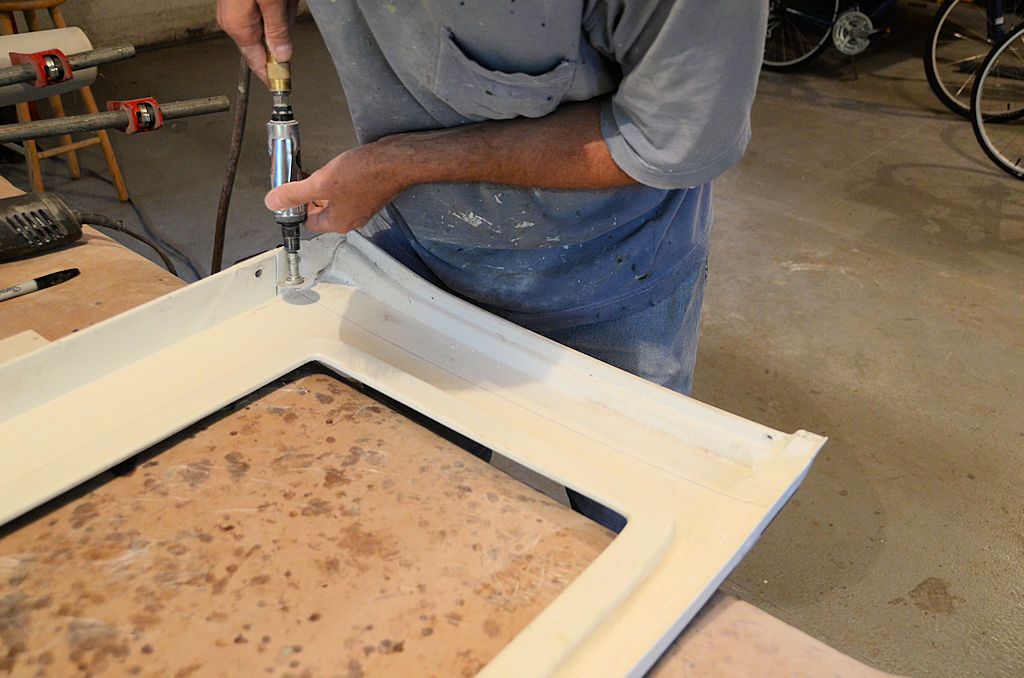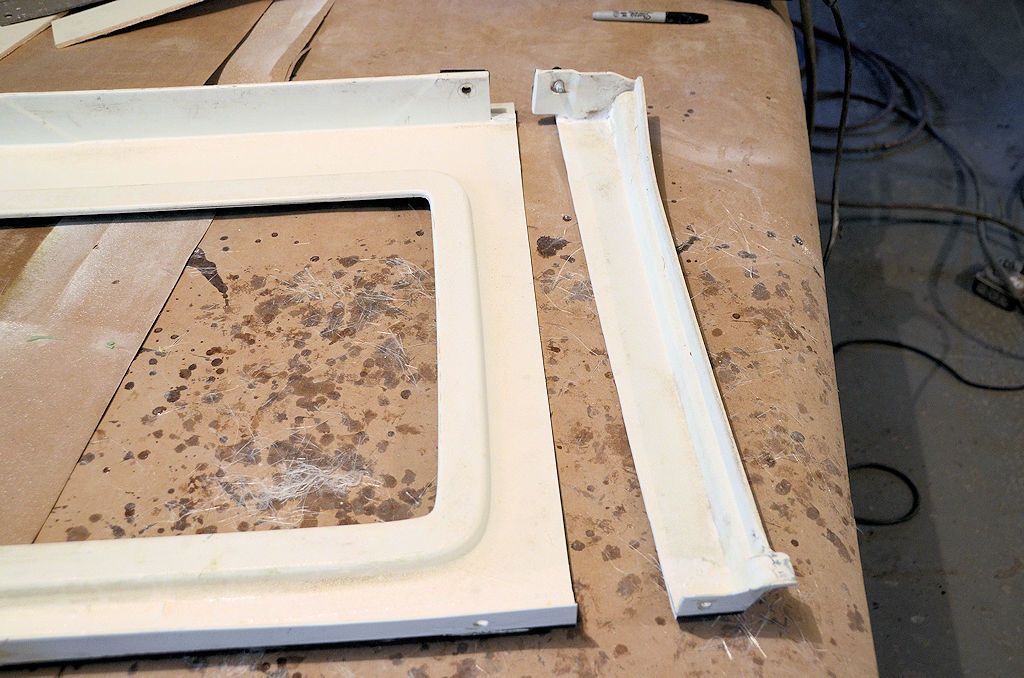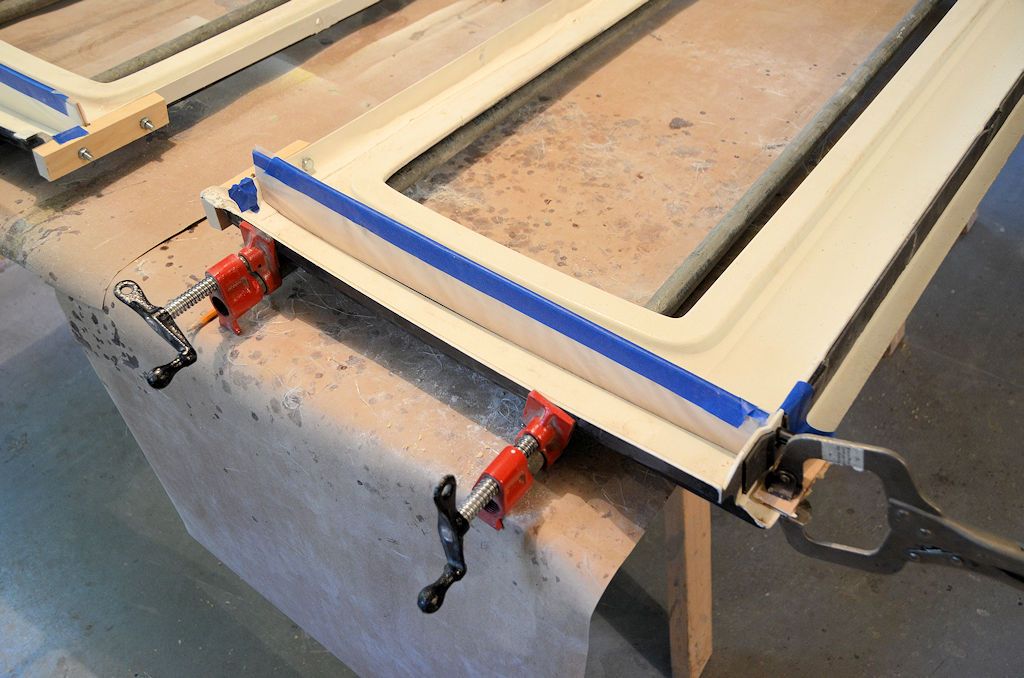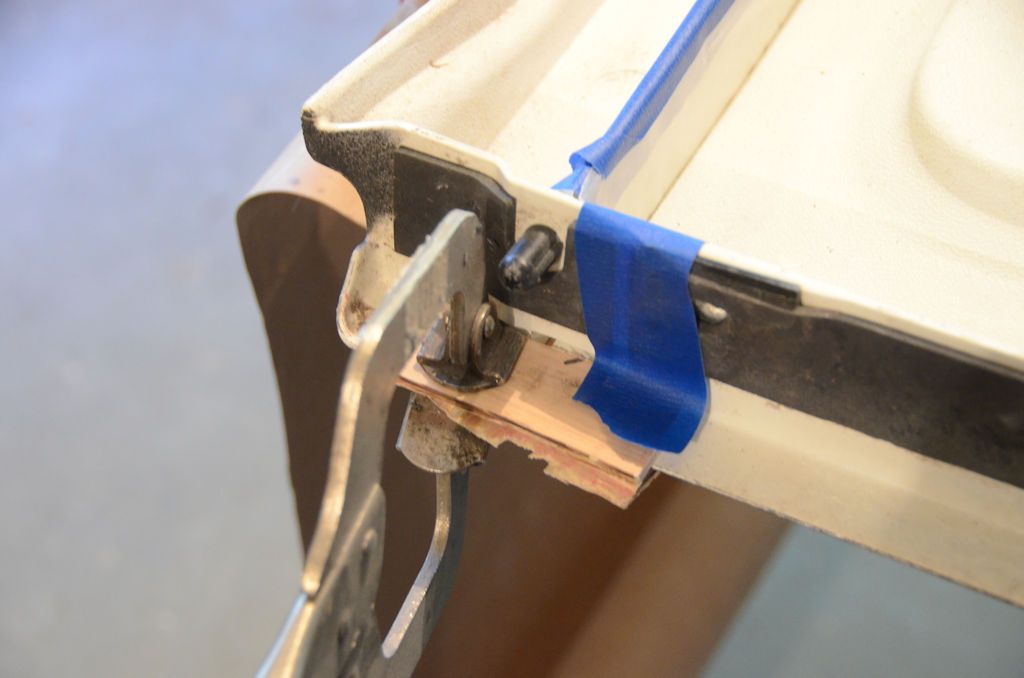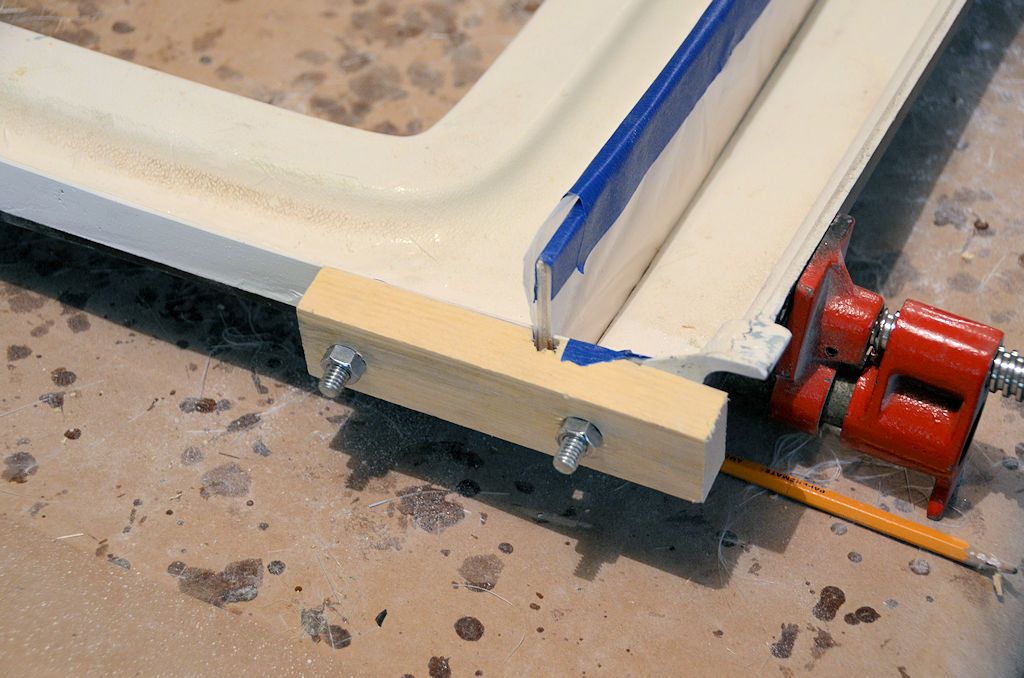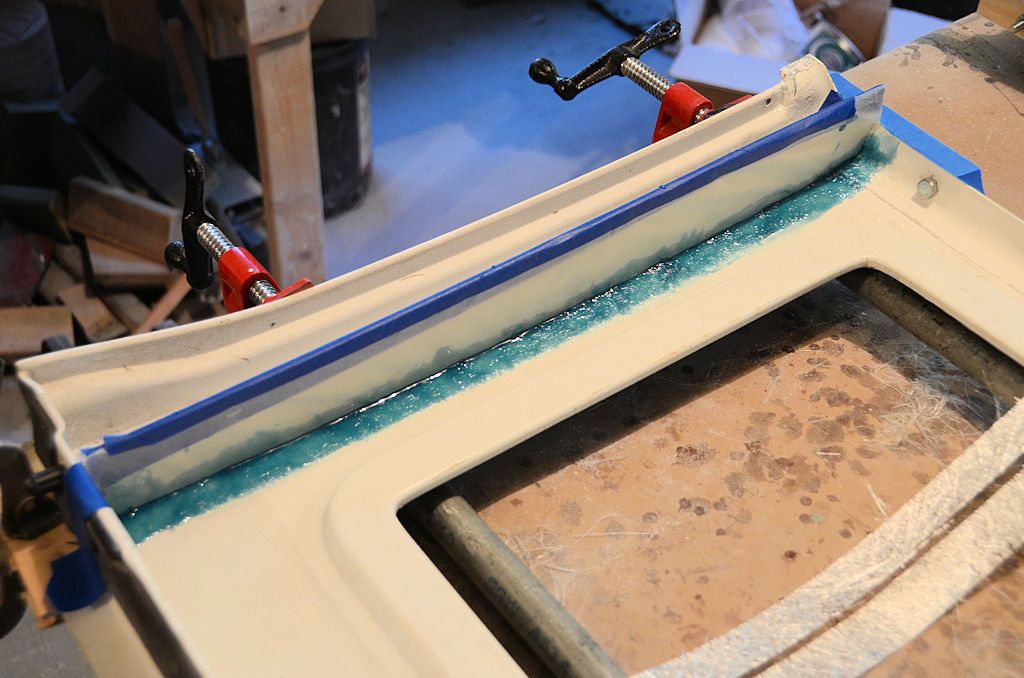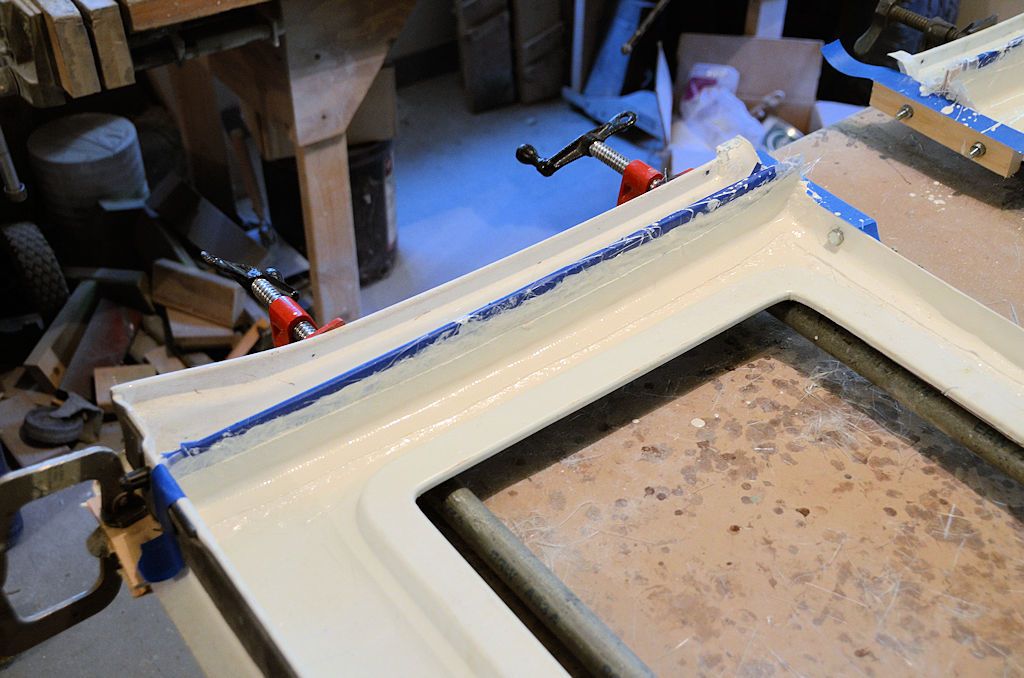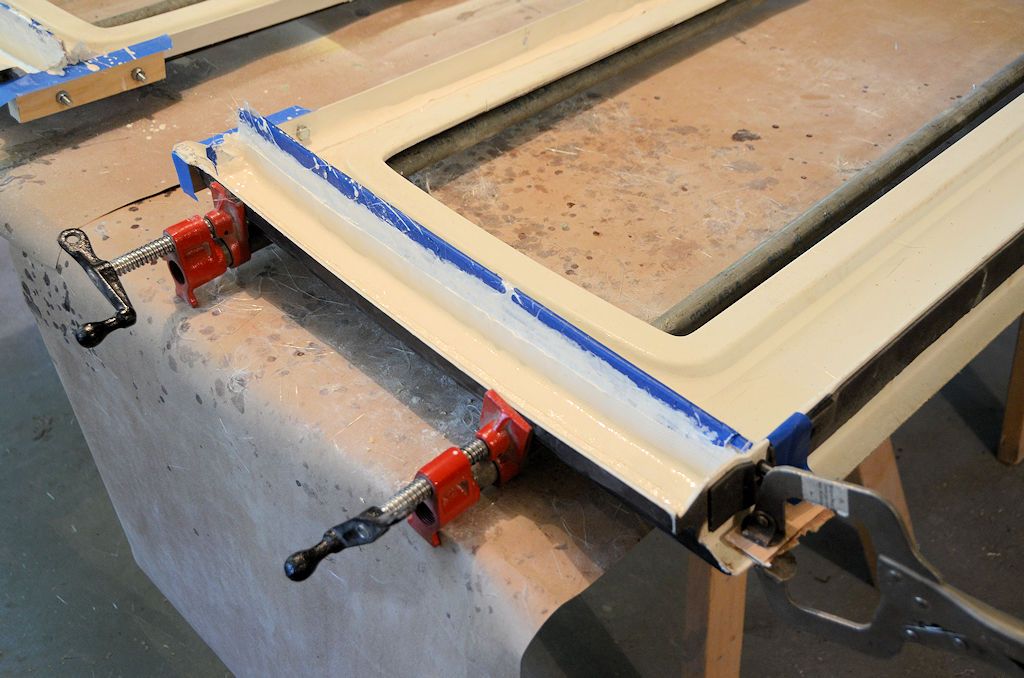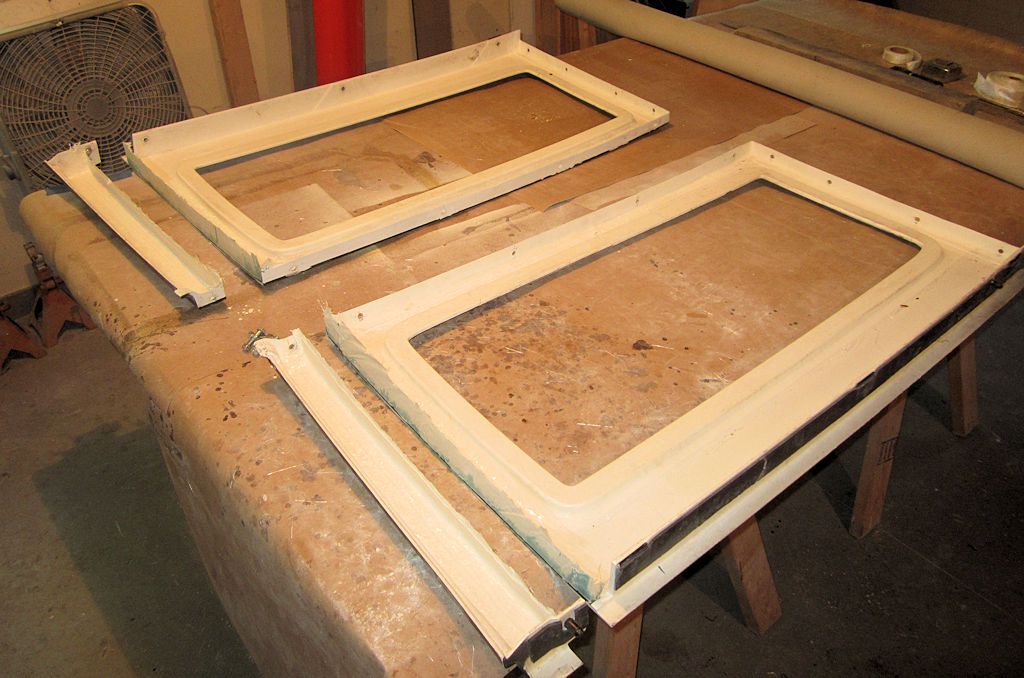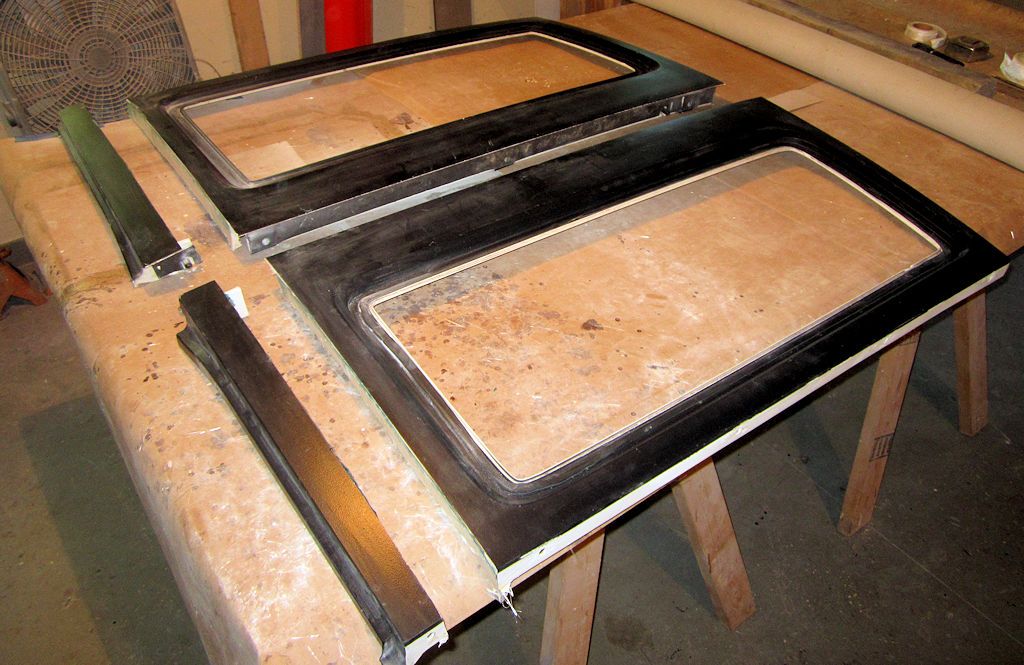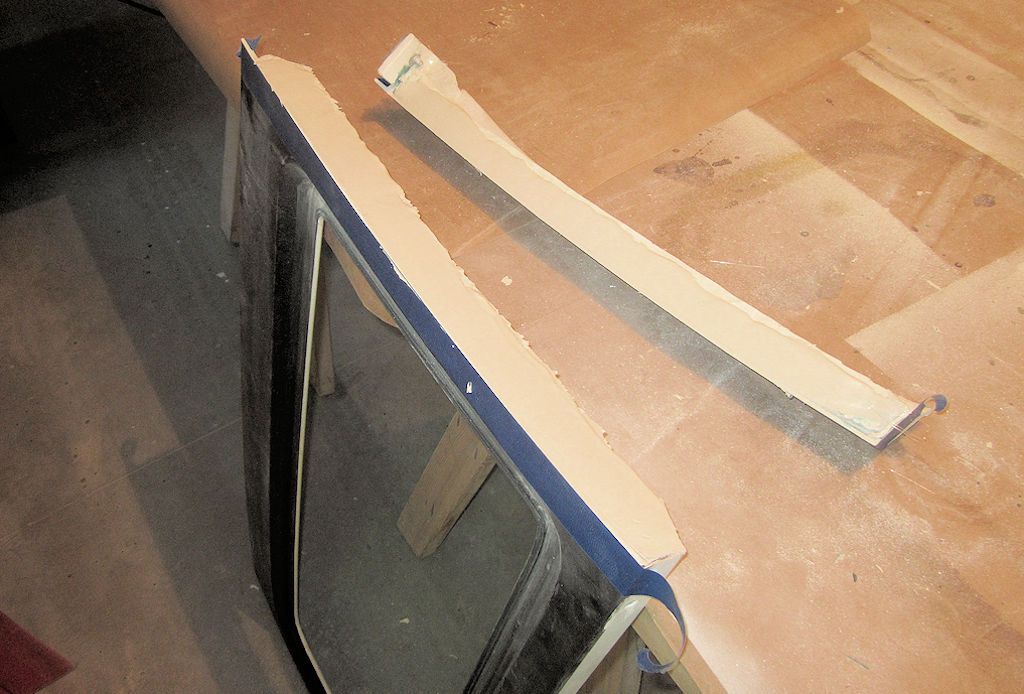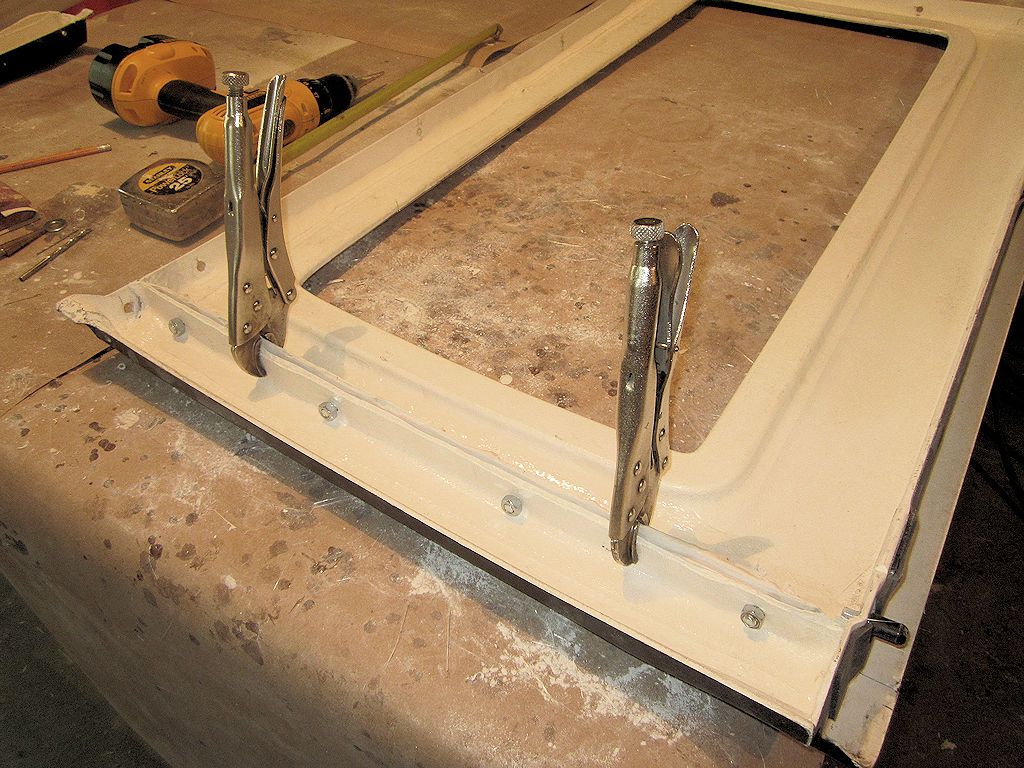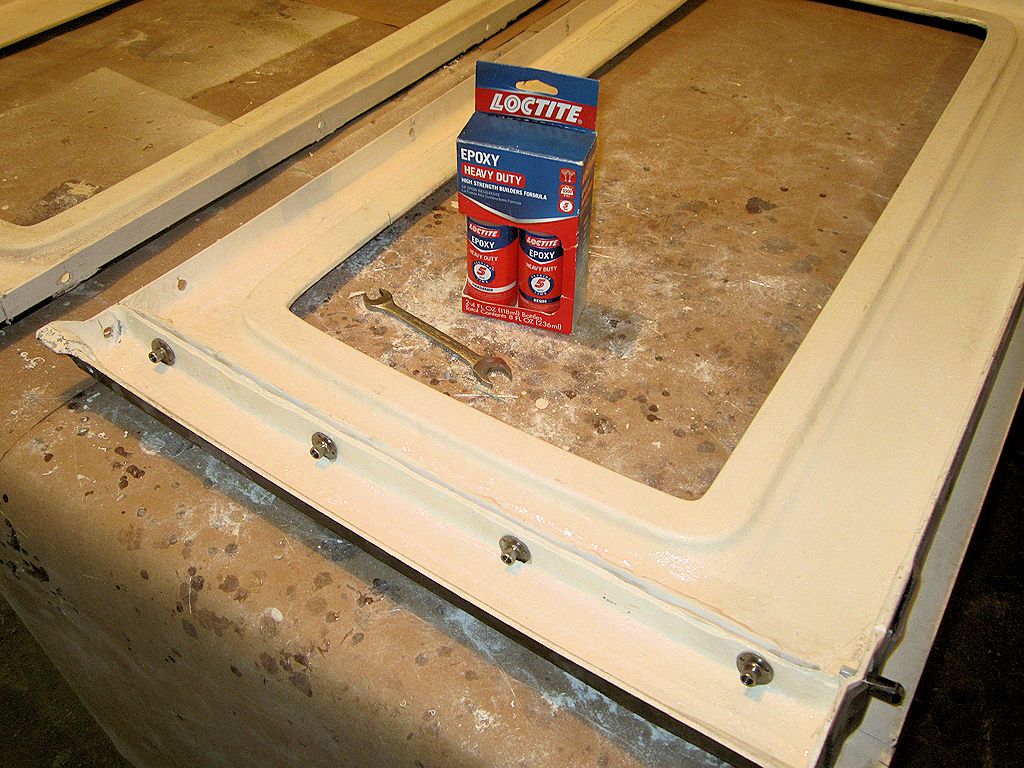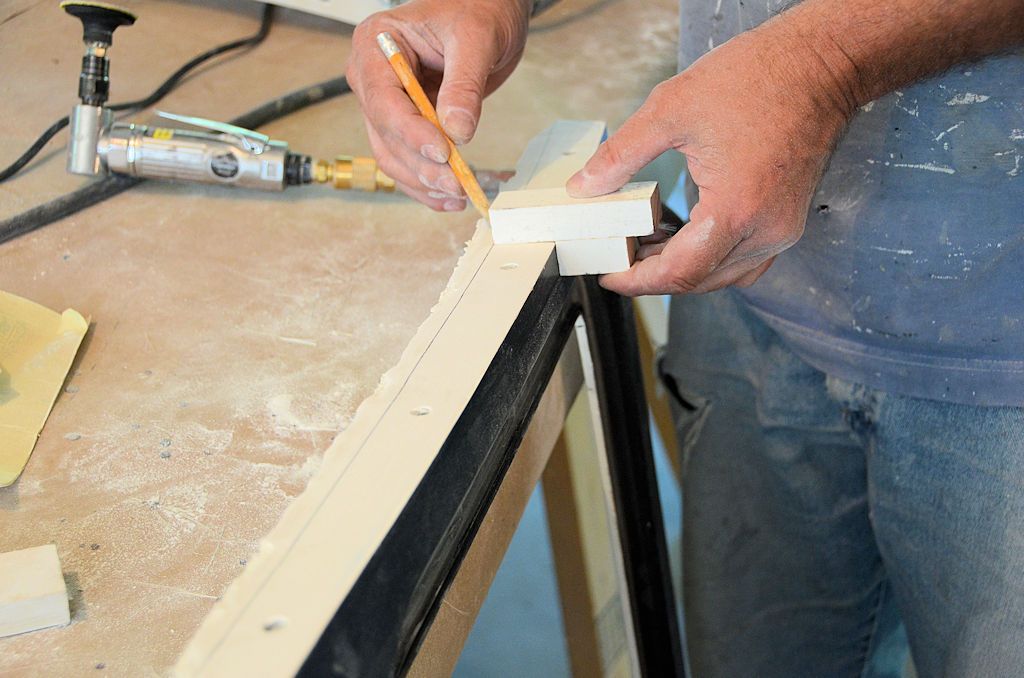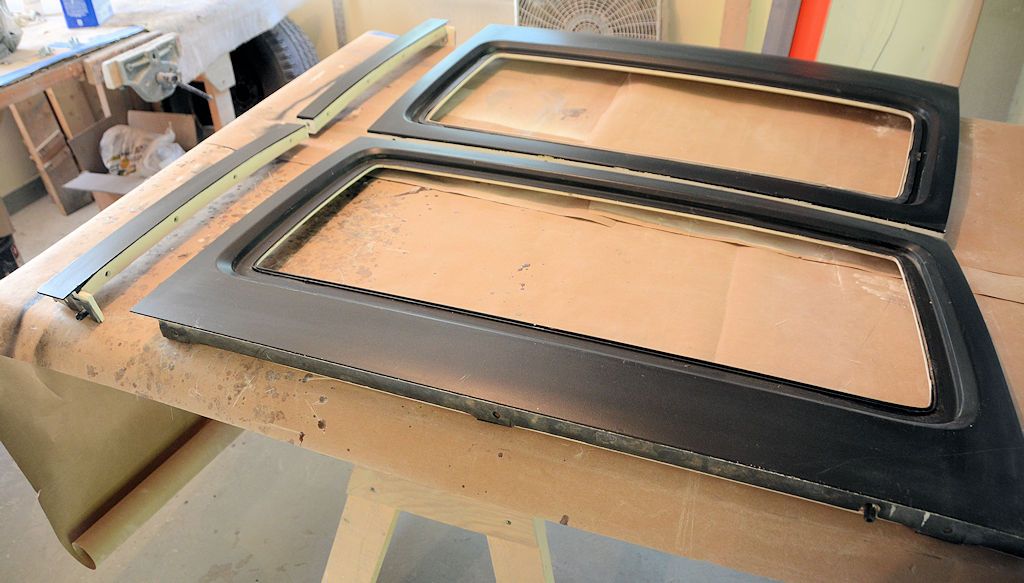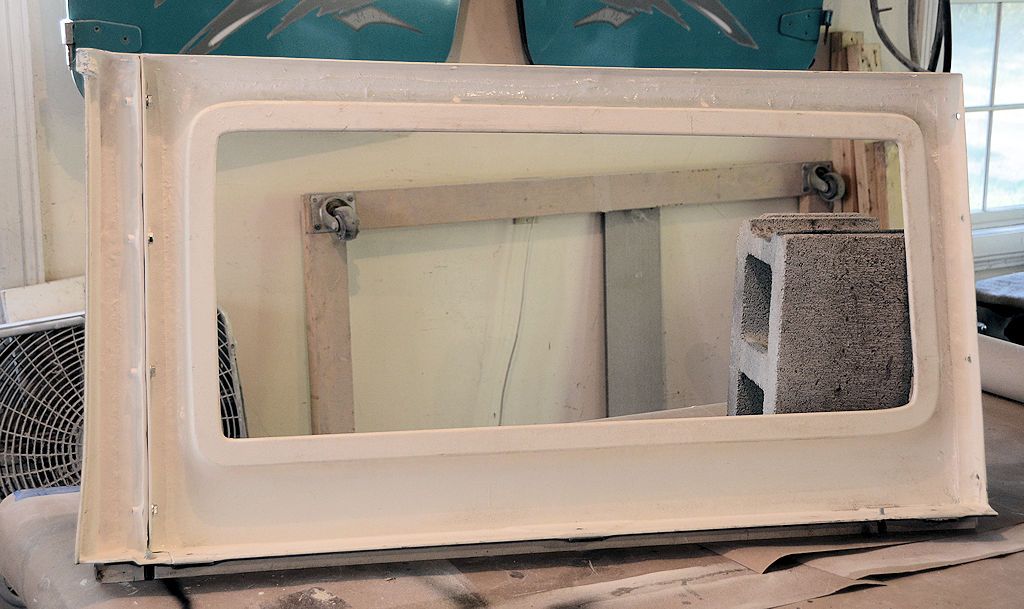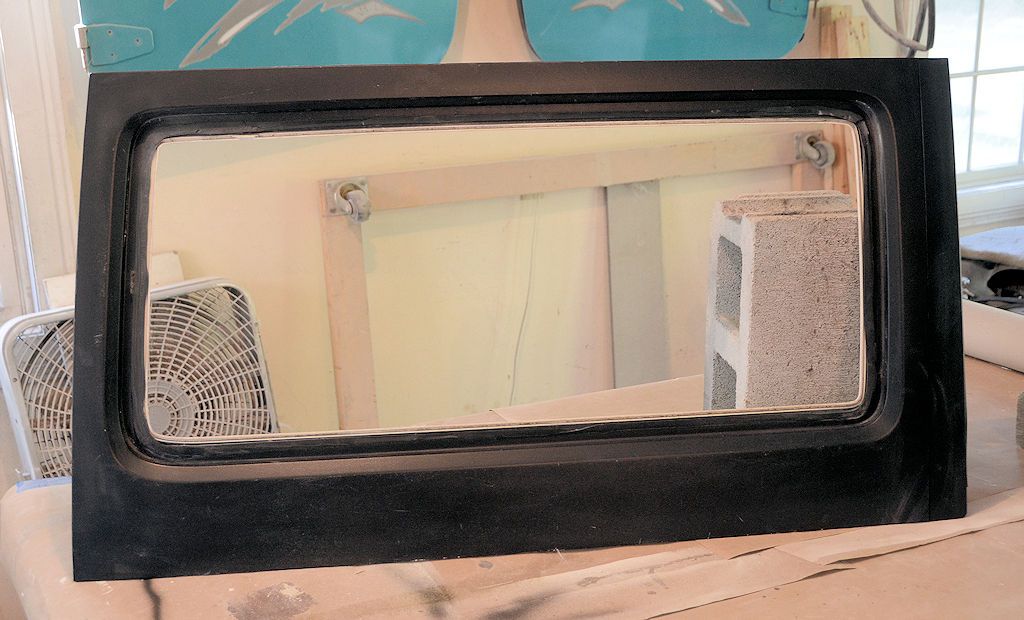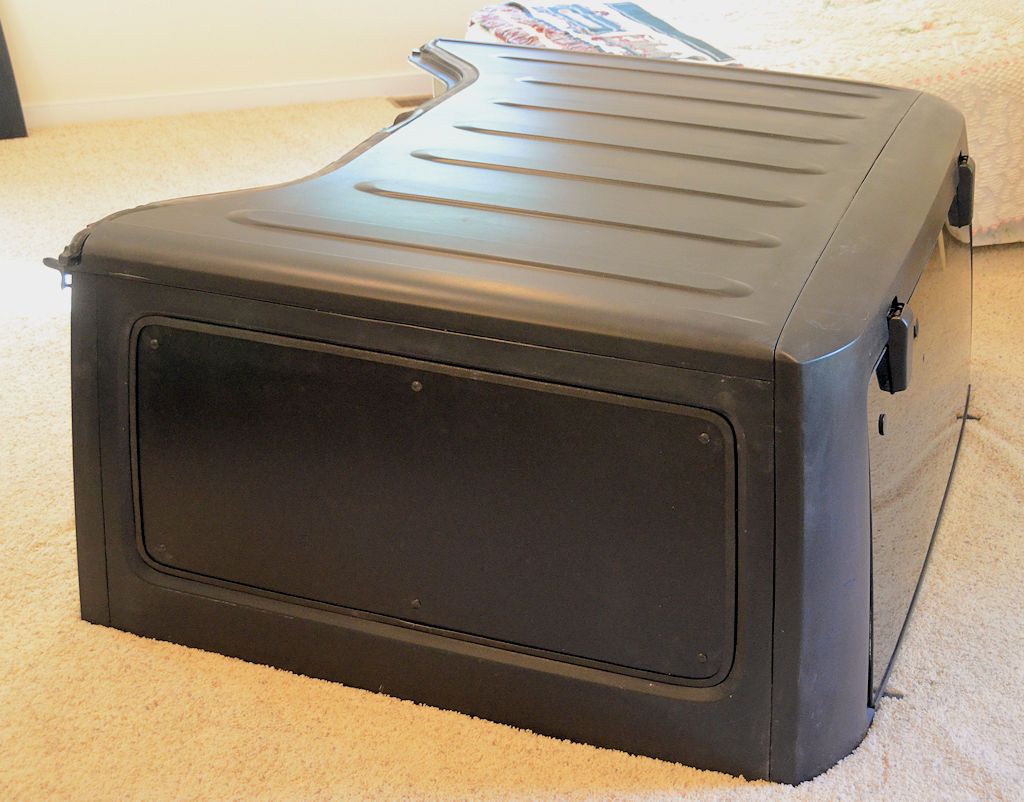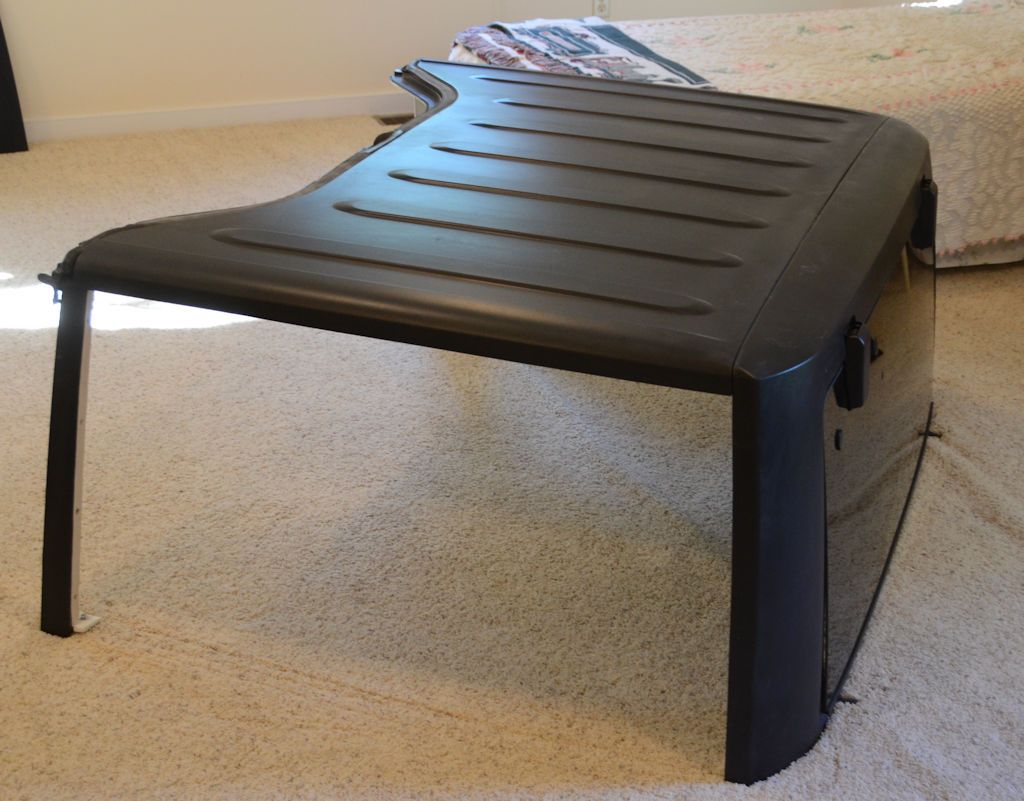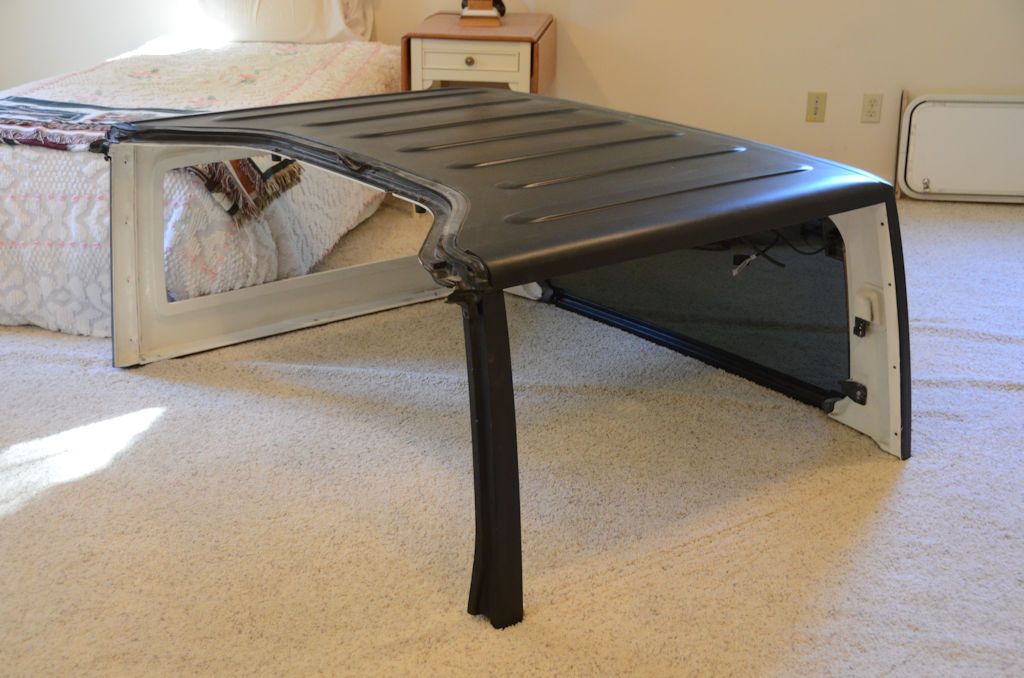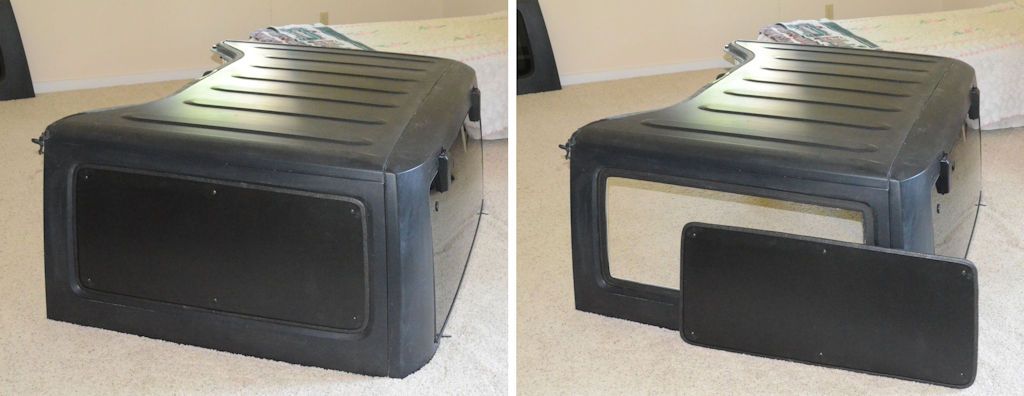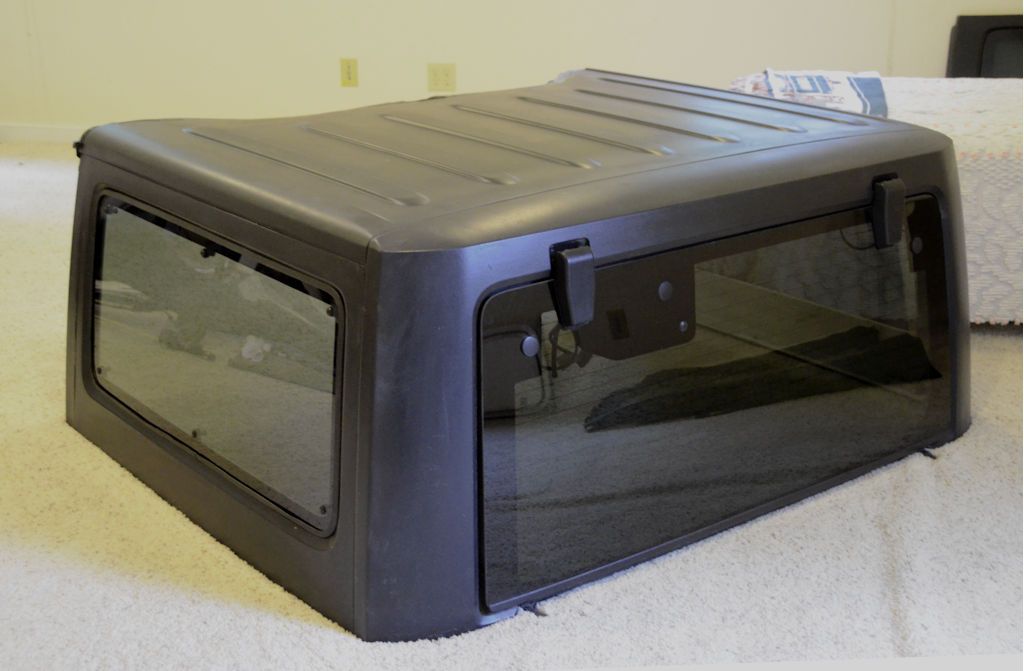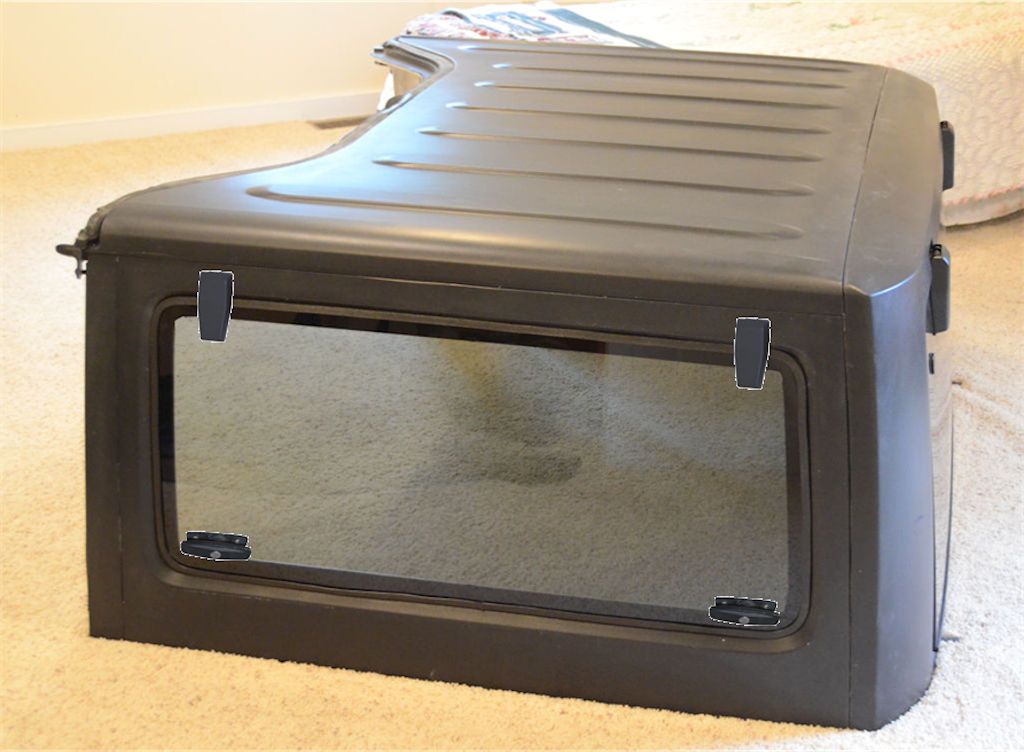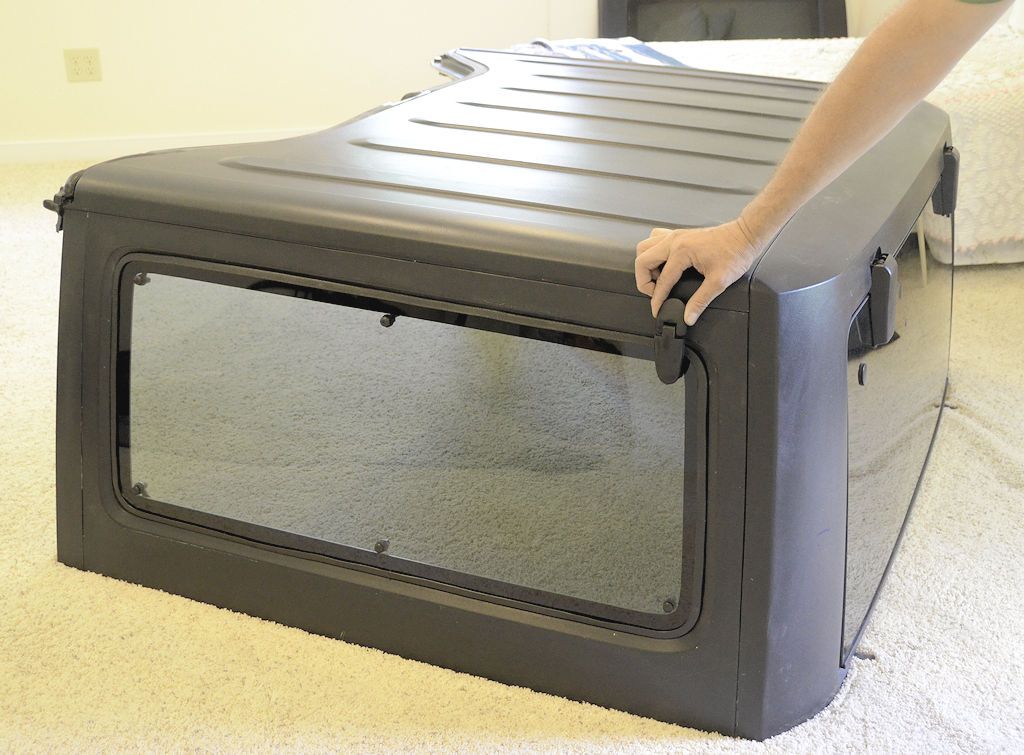Once the flanges have cured completely, the clamps and the form are removed.
A little trimming, sanding and touch-up of the new flanges needs to be done. If there are imperfections in the flanges, perhaps due to wrinkles in the waxed paper on the forms, these can be fixed with body filler. In this next photo I've put a skim of filler on the flange to fix a few wrinkles left from the waxed paper. I've put tape on the outside surface of the top to protect it from the filler. After the filler cures I'll sand the flange flat.
I used Feather-Rite filler, which is off-white in color, and white cream hardener, which is why the filler in the above photo looks almost white instead of a typical body filler color. I had that filler and hardener on hand so I used it, there's no reason it can't be green filler because it'll be touched up with paint anyway.
Another way to prevent possible wrinkles from the waxed paper would be to use spray adhesive to attach the waxed paper to the form, that way the waxed paper could be smoothed perfectly flat when applied.
Once a preliminary trim has been done and any imperfections in the flanges have been fixed, the parts can be clamped together using the new flanges and holes drilled to bolt them together.
Once the holes are drilled (I recommend 4, the same as the joint between the back of the side panel and the rear panel), they can either be left as-is to be used with bolts and nuts, or as I did on the other flanges, t-nuts can be epoxied/'glassed in place to eliminate the need for nuts. That's the way I'm going, here are the t-nuts:
Epoxied:
Reinforced with fiberglass:
The technique for installing the t-nuts is also described earlier in the thread. Put the t-nuts in the pillar as shown, not the side panel, because they'll also be used to bolt the soft side retainers in place.

